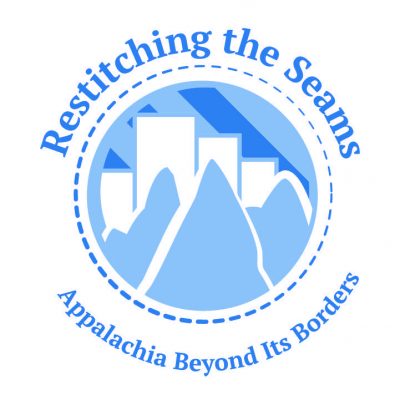Participation Type
Paper
Presentation #1 Title
Exploring the Connections between Community Cultural Development and Sustainable Tourism in Appalachia
Presentation #1 Abstract or Summary
While supporters of development in its neoliberal form view Appalachia as a counterpoint to their definitions of “progress,” critics of that conception see the region as home to a vital culture and hard-working population whose communities and way of life should be respected and assisted in their efforts to cope with the ongoing impacts of globalization and mechanization on their resource extraction-based economies. Poverty, unemployment, drug abuse, declining population and many other socioeconomic issues with which Appalachians have been struggling for years are real and should be addressed, rather than simply dismissed as the result of laziness or worse among those affected by them. This said, the question nonetheless remains of how the unique history and culture of the region can actively be engaged (and not simply commodified), to bring hope to citizens of these communities as they confront rapid social and economic change.
During the last few decades, community cultural development has been used as a tool to engage populations (Goldbard, 2006, 2013) and help them develop fresh alternatives to their dominant ways of knowing, in many parts of the world, including the United States (Stephenson & Tate, 2015). Based on exploratory research and 10-semi-structured personal interviews with community leaders and involved residents in Letcher County, Kentucky, which is now engaged in creating a “community cultural hub,” this paper will explore the process and significance of community cultural development as a mechanism for encouraging the exercise of individual and community agency (Sewell, 1992), and the implications of such efforts for developing community capacity for sustainable tourism, a currently popular alternative to secure economic growth in many of Appalachia’s hard-hit small towns.
Keywords: Community cultural development, Appalachia, Individual and community agency, Sustainable tourism
Sources
Goldbard, A. (2006). New creative community: The art of cultural development. New Village Press.
Goldbard, A. (2013). The culture of possibility: art, artists & the future.
Sewell, W. H. (1992). A Theory of Structure: Duality, Agency, and Transformation. American Journal of Sociology, 98(1), 1–29.
Stephenson, M. O., & Tate, A. S. (Eds.). (2015). Arts and community change: exploring cultural development policies, practices and dilemmas. New York: Routledge.
At-A-Glance Bio- Presenter #1
Neda Moayerian is a PhD student in Planning, Governance and Globalization program at Virginia Tech. Her current research interests include community-based development, Art and culture in sustainable tourism, Local NGOs in developing countries
At-A-Glance Bio- Presenter #2
Max Stephenson, Jr. serves as a Professor of Public and International Affairs and the Director of the Institute for Policy and Governance at Virginia Tech. His current research and teaching interests include collaborative governance, leadership and democratic politics, arts and community change processes, NGOs and international development, peacebuilding and humanitarian relief. He is the author or editor of several books and more than 60 refereed articles and book chapters.
Conference Subthemes
Economic Development, Diversity and Inclusion
Exploring the Connections between Community Cultural Development and Sustainable Tourism in Appalachia
While supporters of development in its neoliberal form view Appalachia as a counterpoint to their definitions of “progress,” critics of that conception see the region as home to a vital culture and hard-working population whose communities and way of life should be respected and assisted in their efforts to cope with the ongoing impacts of globalization and mechanization on their resource extraction-based economies. Poverty, unemployment, drug abuse, declining population and many other socioeconomic issues with which Appalachians have been struggling for years are real and should be addressed, rather than simply dismissed as the result of laziness or worse among those affected by them. This said, the question nonetheless remains of how the unique history and culture of the region can actively be engaged (and not simply commodified), to bring hope to citizens of these communities as they confront rapid social and economic change.
During the last few decades, community cultural development has been used as a tool to engage populations (Goldbard, 2006, 2013) and help them develop fresh alternatives to their dominant ways of knowing, in many parts of the world, including the United States (Stephenson & Tate, 2015). Based on exploratory research and 10-semi-structured personal interviews with community leaders and involved residents in Letcher County, Kentucky, which is now engaged in creating a “community cultural hub,” this paper will explore the process and significance of community cultural development as a mechanism for encouraging the exercise of individual and community agency (Sewell, 1992), and the implications of such efforts for developing community capacity for sustainable tourism, a currently popular alternative to secure economic growth in many of Appalachia’s hard-hit small towns.
Keywords: Community cultural development, Appalachia, Individual and community agency, Sustainable tourism
Sources
Goldbard, A. (2006). New creative community: The art of cultural development. New Village Press.
Goldbard, A. (2013). The culture of possibility: art, artists & the future.
Sewell, W. H. (1992). A Theory of Structure: Duality, Agency, and Transformation. American Journal of Sociology, 98(1), 1–29.
Stephenson, M. O., & Tate, A. S. (Eds.). (2015). Arts and community change: exploring cultural development policies, practices and dilemmas. New York: Routledge.

